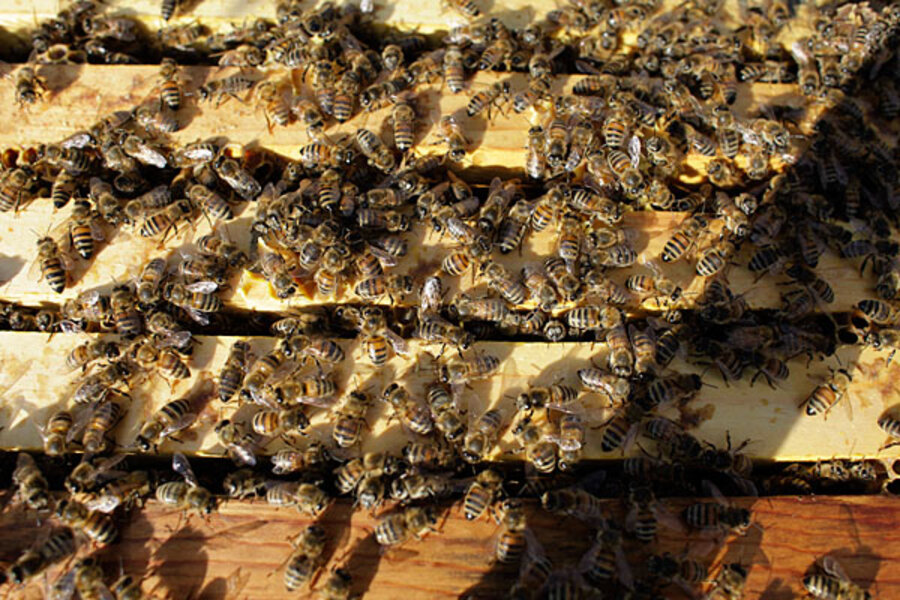100,000 'killer' bees attack Florida park rangers
Two park rangers in Tampa, Fla. were hospitalized after unwittingly disturbing a hive of what appear to be Africanized "killer" bees.
David Zeledon and Rodney Pugh, were using a front-end loader to clear debris near the entrance of Picnic Island Park near Port Tampa. As they turned over a used truck tire, as many as 100,000 bees swarmed into their vehicle.
"It was like bees all in the cab," Pugh told ABC Action News. "So I'm trying to swat, and they say never to swat bees."
The men fled, but not before getting stung almost 100 times.
"It's the worst feeling, because you just had so many and they wouldn't stop," said Pugh. The two men are expected to fully recover.
The bees were most likely Africanized honey bees, a hybrid of the European honey bee, which was introduced to the New World in the 1600s, and the African honey bee.
In the 1950s, scientists in Brazil sought to interbreed honey bees from Europe with those from southern Africa, with the aim of creating a strain that would be more adapted to tropical climates. In 1957, 26 of the African queens were accidentally released into the wild, where they mated with non-African domesticated bees. Their descendants have since spread throughout the Americas, often driving out colonies of European honey bees.
Africanized honey bees are nearly identical to European honey bees, and can be physically distinguished only with a microscope or with a DNA analysis. But it is their behavior that sets the Africanized bees apart.
"The European bee will swarm once or twice a year. The African bee will swarm up to 17 times," said Insect I-Q's Jonathan Simkins, who was called to exterminate the hive in Tampa.
Africanized bees are also more aggressive, according to experts at Utah State University. When their nest is intruded, they will defend in greater numbers compared to their European counterparts.
Reseachers at Columbia University said Africanized bees tend to react to disturbances ten times faster than European Honey Bees, and will chase a person up to a quarter of a mile.
Their sting, however, is not more painful or venomous than European bees.
Since being introduced into Brazil, Africanized bees have killed an estimated 1,000 people, with victims receiving ten times as many stings than from the European species.
Africanized bees first arrived in Texas in 1990, before spreading to Arizona, Florida, Nevada, Georgia, and California. According to a fact sheet provided by entomologists at the University of California, Riverside, Africanized bees caused 6 deaths in the 1990s.







